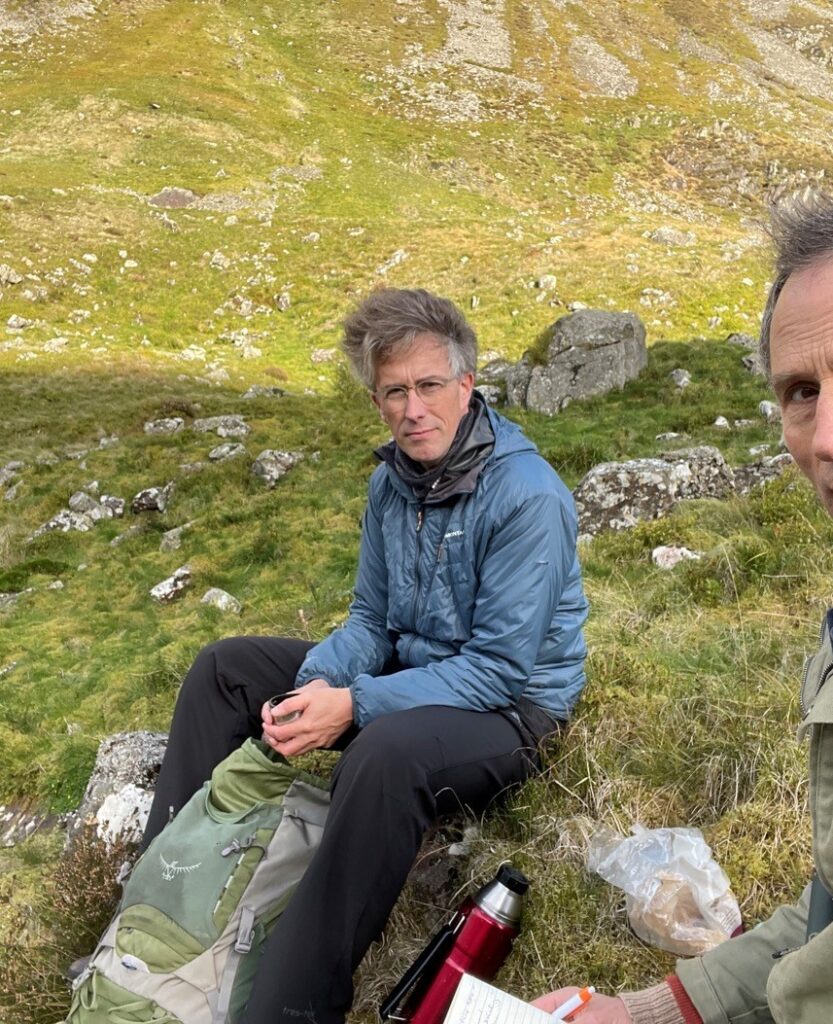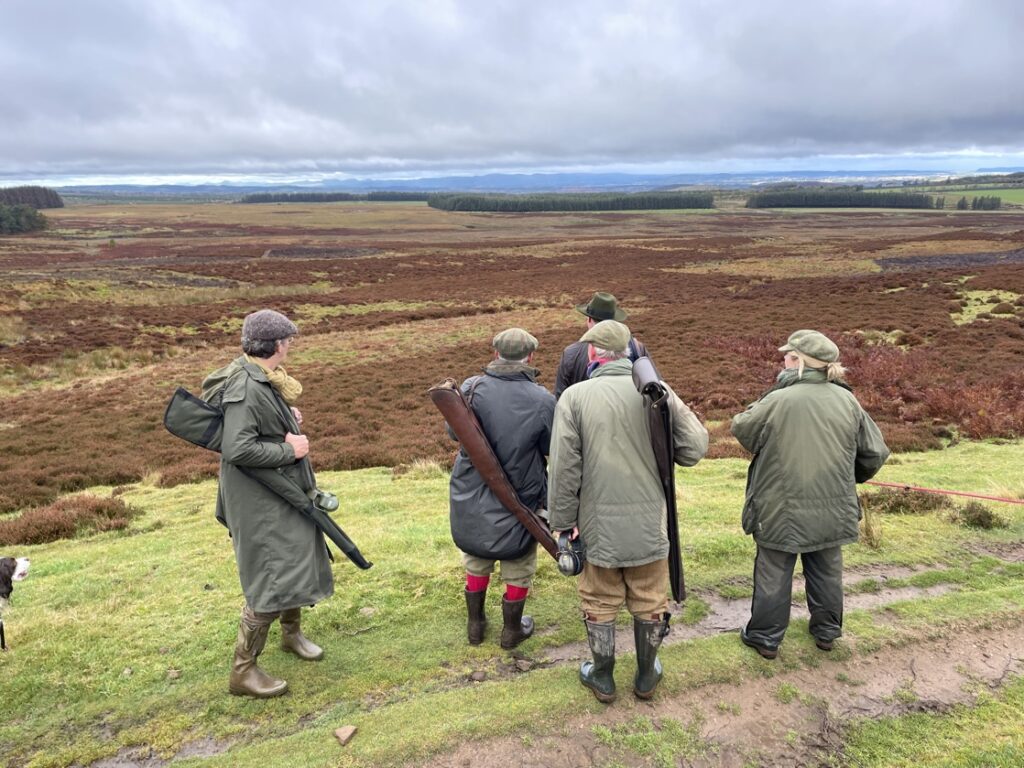My innate curiosity to understand what people think and do (rather than talk about), resulted in my arrival at the foot of a hillside, home to Cumbria’s Helm wind. This is what I learnt from fourteen face-to-face meetings over four days across northern England and southern Scotland.

Edible windbreaks
When the wind blows, think of planting some sticks across open fields. And call them “browsable windbreaks”. That then works for farmers in tough places, rather like old fashioned shelterbelts, even if some tough thinking farmers raise an eyebrow in the pub.
Mind you, many would agree that boots on the ground calling cattle makes all the difference with livestock getting trees into damp places is as easy as sticking a willow branch in the ground.

Dairy genetics
A place out of the wind, I dropped in on an adaptive dairy farmer, Robert, busy ‘fitting the cow to the land’ including building resilience with smaller ‘high milk solid’ beasts, reducing nitrogen to the environment, utilising sexed semen.
Oh, and getting mid-tier stewardship money approved for payment on dirty-water-reducing cattle sheds. Perhaps these ‘hard’ works provide more of an immediate benefit to the environment than meets the eye than, dare I say it, than some ‘soft’ media-ready agri-enviro works?

Juniper silage
We are “farming the farm we have, not the farm we want to farm” is how Colin, a mixed livestock farmer, summed up our brief outing.
Look at all this in-situ ‘silage’ ready to be grazed in the winter from moving around stock, reducing density and numbers in some areas. Yes, it’s more hand-on but that enables flexibility for results-based outcomes; from juniper berries abounding, to gnarled hawthorns reinforcing a need for tree pastures in face of ecologist-designated ‘open land’.

Harrier’s keeper
Creating space to rebuild trust, breaking down barriers, sidestepping ‘gatekeepers’, articulating humility, expressing tolerance are all key aspects around humans co-existing with birds of prey. (Perhaps especially those with a name for themselves – clue, it may have once harried your backyard hens.)
It takes all sorts. Literally. Enforcers, facilitators, scientists both ecological and social, campaigners, mediators, land managers, rangers, keepers. Without burning bridges or boats…
“If you want to be a leader, be a bridge”
Welsh proverb

Food grid
Some motorway service stations have food czars on tap. Apologies to Henry Dimbleby for doorstepping him and thrusting my dog-eared Food Strategy Plan into his grip for a photo-opportunistic moment.
Earlier, and obvs unrelated, I noticed no hedgehog ramps in the cattle grids; which has now been retrospectively remedied.
Catchment broker
One person embedded within a community is worth a handful of experts elsewhere. Well away from ‘zoom and doom’, Danny is a man who connects grass roots practitioners to public funding* for environmental works.
There’s stacks of it*, and those enlightened eNGOs which have realised they don’t have the rural ‘social nuance’ (my phrase, translate as trust of the farm/forestry/landowner community) to make it work, they engage ‘trusted intermediaries’ to make it fit. Voila!

Community trees
‘If you don’t ask, you don’t get’. This applies in spades when a large-scale forestry proposal thought they were too far out the way to have engage the community (‘if we do it for you, we’ll have to do for others’ is so out of touch).
With a little (F)foresight, Joe from the local council creatively crafted a solution for 7 acres to be provided for local benefit – as well as nodding towards the benefits riparian planting along Galloway glen rivers.

Cultural nature
Has a default to online platform communication lost our face-to-face coffee-flask connection enabling us to (re)build trust? Understanding the culture of land use is as important as having data on nature. Or put another way, without social science, ecological science may fail to gain traction in delivering evidence around changing land management practices.
The big ask is finding the space to acknowledge and tolerate other narratives to then act on the common purpose. An example: changing muirburn practices to help build resilience against wildfires.

Hunters in common
Those that carry guns know where the wild things live. Aldo Leopold could have said that, but didn’t. A landowner, forester, farmer or land manager creating scrapes for dragonflies and wading birds at their own cost, does so because of their passion for nature.
‘Once farmers, landowners, land managers actually know what nature they’ve got on their land, their behaviours will change. They want to demonstrate why their place is special and why they, as a private interest, can be trusted to look after the land’
John Varley

Circular farm
There’s a theme building here. By accident: as what’s right for the land may mean you can’t farm it how you want. An examination of soil, contemplating deep-rooting grasses, or measuring grazing swards is something the majority of farmers may not have quite got around to yet.
It’s not always easy when research institutes don’t always share their research with farmers; and nor do farmers ask for it. When they should. As benchmarking will be imperative in finding out what works on the ground (not the same as ‘wanting to make work’ on the farm) and then trying something else.

Eye of the storm
Even in the full blow of a red alert ‘impactful’ storm, how you say it matters. Red-top social media platforms are fiends for this, even if those on social media can be perfectly friendly. Land use in Scotland is evolving – see my 110sec vlog (Youtube) from a glen at the top of the river Carron in Sutherland.
The ability to undertake adaptive ‘test and trial’ management, rather than prescriptive-led position statement policy, has surely come to the forefront for many wishing to explore ‘alt’ land uses.

Shortbread and whisky
When seeking a chance of common ground, drop your guard. Offer up a small gift of biscuits at the start of the conversation. Or better still, offer up yourself within the audience to contribute information on a subject you know well – as Tom did at a talk on grouse hosted by an wildlife campaigner. Don’t deflect from the tensions, absorb them as people respect honesty. But don’t go down the rabbit hole, even if others want to.
Tree on a wall
“The degree of one’s emotions varies inversely with one’s knowledge of the facts, the less you know the hotter you get”
Bertrand Russell (research: ‘Environmental knowledge is inversely associated with climate change anxiety’)
Hollywood is not the only arbiter of emotion for a tree on a wall. Watch for blindspots (some might need to step aside, while others need to step forward) – while all of us making space for diverse voices at the shared environmental table.

Field intel thanks
“You’re never a prophet in your own parish”
Thanks to all those who took the time to host me, share thoughts and especially to those who put me up for the night on this ‘field intel gleaning info trip’.

Reno and Nic Renison

Doug and Alison Christie



